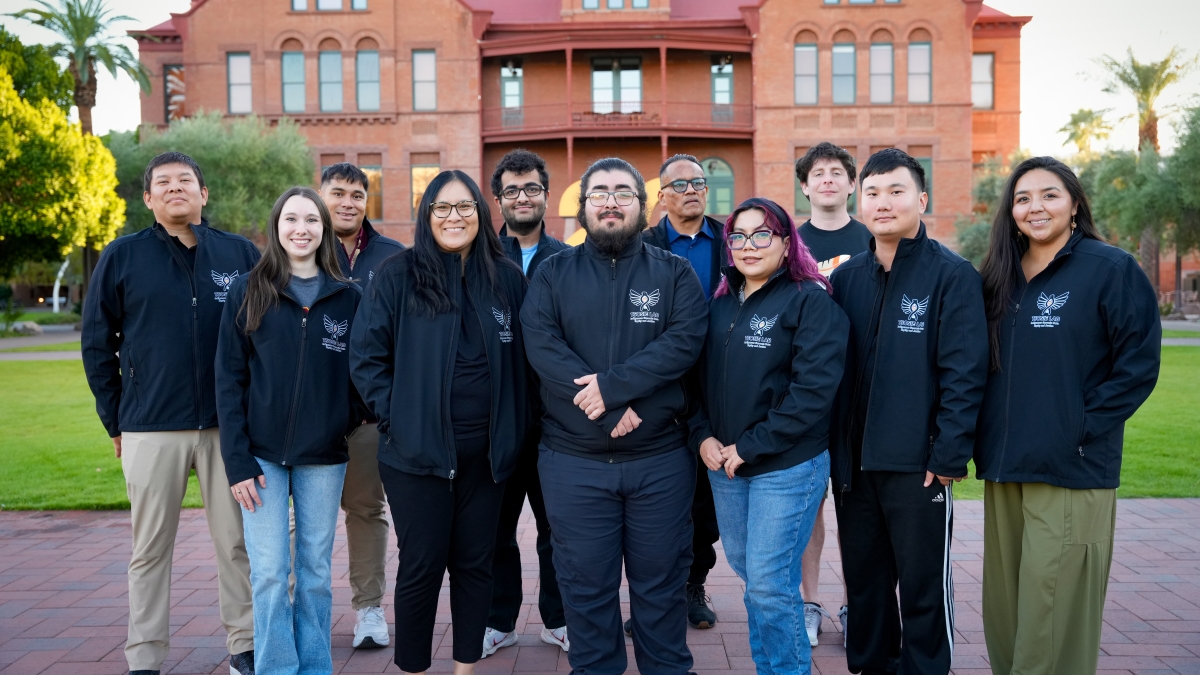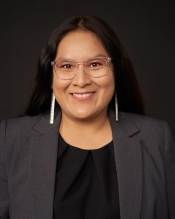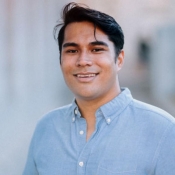Indigenous geneticists build unprecedented research community at ASU

The members of the Tsosie Lab for Indigenous Genomic Equity and Justice. Nine of the lab members are Indigenous, including three PhD-holding researchers. Photo courtesy of Joshua Tso
When Krystal Tsosie (Diné) was an undergraduate at Arizona State University, there were no Indigenous faculty she could look to in any science department. In 2022, after getting her PhD in genomics and health disparities from Vanderbilt University, she became the professor she always longed to see when she returned to ASU as the university’s first Indigenous geneticist.
“It feels full circle, honestly, to be able to come back and fulfill this very much needed hole in representation in the life sciences,” Tsosie said.
Now, though, with the recent hiring of Leslie Hutchins (Kānaka ‘Ōiwi) and Jay Goldberg (Baawiting Anishinaabeg), Tsosie is one of three Indigenous geneticists working in the School of Life Sciences. Their presence potentially makes ASU the R1 institution with the most Indigenous geneticists, according to Tsosie. Less than 1% of PhD recipients in broad disciplines in the U.S. are Indigenous, and Indigenous people make up less than 1% of faculty as postsecondary institutions. Having three PhD-level Indigenous geneticists at one institution is rare, and significant.
“Maybe it doesn’t seem like a lot to go from one to three Indigenous faculty members. But we are making exponential inroads towards broadening the support network for emerging Indigenous students in scientific disciplines. We’re also expanding the potential for curriculum and research at ASU to be more reflective of Indigenous sciences, Indigenous sovereignty, and uplifting community-engaged research with Indigenous communities.”
Hutchins and Goldberg will both be joining the Tsosie Lab for Indigenous Genomic Equity and Justice, an interdisciplinary lab that does genomics research, bioethics work and community-engaged research. They particularly emphasize the importance of Indigenous data sovereignty in genomics, or the rights of Indigenous people to control genomic data that comes from their land and people.
“You cannot conduct genomics research on Indigenous peoples or on kin species that have been derived from our bodies and our lands without also thinking about the rights of community members and their derived benefits from those same genomics technologies,” Tsosie emphasizes. Nature News highlighted Tsosie for speaking out about unethical use of Indigenous data earlier this year.
Tsosie studies human genetics, a role that she explains holds particular importance because of the harms against Indigenous peoples that the field has perpetuated, such as the frequent nonconsensual collection and use of Indigenous genetic data, which has very rarely benefited Indigenous peoples themselves.
Hutchins and Goldberg focus on genomics of other species, which Hutchins emphasizes is just as important for Indigenous researchers to be involved in: “All the biodiversity that has been catalogued has exclusively been done by non-Native folks. ... I think it’s important to be in this space to shift these narratives about who does this data belong to, how should we attribute this data, and who should belong in this field.”
Hutchins, who did his PhD at UC Berkeley, studies whether wild crop species on the island of Kona (the Big Island of Hawai’i) are good hosts for native arthropods, which he investigates using environmental DNA samples. Goldberg, who is currently finishing his year as a postdoctoral researcher at the John Innes Centre, uses genomic data to study the coevolution of certain pollinators with sacred datura, a poisonous plant native to the Southwest that is sacred to the Hopi and other Native tribes. Hutchins and Goldberg will also both be joining the Tsosie lab’s efforts to apply Indigenous data sovereignty principles to the collection and management of data in large genomic databases.
Hutchins has been applying Indigenous data sovereignty principles to the work he conducts with communities in Kona, Hawai’i, for some time, which was recently highlighted in Science. For Goldberg, working with the Tsosie lab will be his first time applying principles of Indigenous data sovereignty in his own research: “I’m excited to learn more about tribal lands and their ecology, but do it all respectfully while helping the tribes work towards their own goals.”
"I grew up off the reservation, so it’s very rare that I’m actually in Indigenous spaces,” Goldberg said. “ASU has a ton of Indigenous faculty, though, which is awesome. I feel like these last couple of weeks hanging out in Phoenix, I’ve been in more Indigenous spaces than the rest of my life put together.”
Hutchins shares similar excitement to be part of a growing Indigenous academic community: “Oftentimes, you can feel very isolated as an Indigenous student, and as an Indigenous researcher in STEM. You usually find your community outside of your institution. Having a community on campus is very transformative.”
The Tsosie lab, which was only started last year, already has 12 members, nine of whom are Indigenous. ASU’s Presidential Initiatives, like the Postdoctoral Fellowship that Hutchins and Goldberg were hired through, and the Graduate Assistantship Program have been vital to supporting several of the lab members. As Hutchins and Goldberg transition from being postdoctoral researchers to professors, they are intent on bringing in more students to continue increasing representation in their fields, and helping their community grow.
“Having a community so you’re not just one voice in a fight is powerful,” Hutchins said with a smile.
Of course, there is always more work to do. But Tsosie sees that as an opportunity: “Yes, there are a low percentage of Indigenous peoples in the sciences, but it means that the Indigenous scientists that come forward have the greatest potential for positively impacting the fields and our peoples.”
More Science and technology

From food crops to cancer clinics: Lessons in extermination resistance
Just as crop-devouring insects evolve to resist pesticides, cancer cells can increase their lethality by developing resistance to treatment. In fact, most deaths from cancer are caused by the…

ASU professor wins NIH Director’s New Innovator Award for research linking gene function to brain structure
Life experiences alter us in many ways, including how we act and our mental and physical health. What we go through can even change how our genes work, how the instructions coded into our DNA are…

ASU postdoctoral researcher leads initiative to support graduate student mental health
Olivia Davis had firsthand experience with anxiety and OCD before she entered grad school. Then, during the pandemic and as a result of the growing pressures of the graduate school environment, she…

